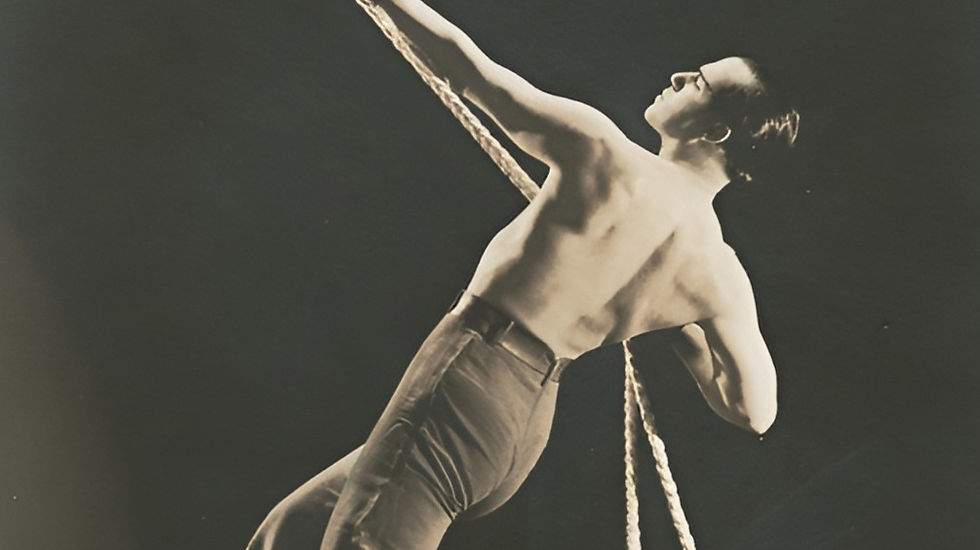A Costume Design Icon: Part 1
- adamjfowler

- Aug 17, 2022
- 4 min read
Updated: Jan 26, 2023
As one of the most famous costume designers in film history, Brother Walter Plunkett's work has been seen by millions.

b. 1902 - d. 1982
Costume Designer Brother Walter Plunkett: A Look at His Life and Work. Part 1 of 3.
Walter Cohick Plunkett was born on June 5, 1902, in Oakland California to parents James Arthur Plunkett and Frances Cobbledick. In high school, Walter’s English teacher encouraged him to try out for Oliver Goldsmith’s She Stoops to Conquer during his senior year. He was ultimately cast as the play’s lead foreshowing a life in the arts on both the stage and screen. Brother Plunkett attended the University of California Berkeley from 1919-1923 and was initiated into the California Alpha Chapter of Sigma Phi Epsilon in 1919 — the year the 18th Amendment (prohibition) was ratified by the states and a year before it would ultimately go into effect with the passage of the Volsted Act.
Walter Plunkett, upon joining Sigma Phi Epsilon, would be joining an organization with forty-four active chapters entering its eighteenth year of operations having just convened it’s tenth Grand Chapter Conclave in Indianapolis, Indiana (Claypool Hotel, October 23-25). Brother Plunkett started UC Berkeley as a pre-law major, but as he told the Sigma Phi Epsilon Journal in 1935, “a course in the history of jurisprudence killed that idea. The class came immediately after lunch, and I couldn't keep awake in it.” He would ultimately major in English and enrolled in several art courses -- including a course on the history of costuming -- as electives. After participating a Shakespearean speech contest, the head of the Drama Department began to assign him regular small parts in a Shakespearean repertory company near campus.
While at UC Berkeley, Plunkett was elected to the literary (English) Club, initiated into the dramatical honor society “Mask and Dagger,” and selected as art editor of the Blue and Gold and the California Pelican — a college humor magazine founded in 1903. One of the well-known early contributors to the magazine, Rube Goldberg, had supplied the magazine with cartoons prior to graduating in 1904. The magazine would go on to run for 80 years. Brother Plunkett acted in several theater productions while at Berkeley and had decided he wanted to be a stage actor as graduation approached. As the graduation date neared in 1923, his father James bought him a train ticket to New York and told his son he should pursue his passion for the stage.
Greenwich Village to Los Angeles
In the summer following graduation Brother Plunkett moved east to New York’s Greenwich Village, which at the time was one of America’s first gayborhoods. He quickly found himself cast in a small part in Out of the Seven Seas at the Franzee Theater. In the spring of 1924, following his run in Seas, Plunkett would land a role in The Man who ate the Popomack staged at the Cherry Lane Playhouse (now Theater). The theater scene proved engaging as drag acts and gay subculture were rising to prominence on many stages in Greenwich Village, Times Square, and Hollywood as prohibition was beginning to define the 1920s and early 1930s. The popularity of gay clubs and performers – what would later be termed the “Pansy Craze”— ushered in a surge in openly gay nightlife in New York, Los Angeles, and other major cities around the world.
It was around this time Walter met Howard Greer, who had been designing costumes for The Greenwich Village Follies which ran for two hundred and nine performances between 1922-23 at the Shubert Theater. It’s unclear if there was a romance between Howard and Walter, however, accounts from friends indicate, at a minimum, there was an infatuation on Greer’s part with the younger Walter. By 1925, Broadway success continued to elude Walter, and Howard extended an invitation for Walter to follow him west to Los Angeles, California. Walter and Howard would not be alone in their migration from New York to Los Angeles. Throughout the 1920s actors, writers, and designers began to move west to practice their crafts in the new medium of motion pictures. The city felt like a place on the edge of the world compared to New York and was only beginning to transition into a major American city. In 1890 the City of Los Angeles boasted a population of 50,395. When Walter and Howard would arrive in 1925 the city would be in the middle of a decade where the population would more than double — from 576,673 in 1920 to 1,238,048 in 1930. Many of the creatives arriving in Los Angeles came from vaudeville and theater in New York and Europe where bohemian lifestyles of nonconformity were valued.
Once on the west coast Howard Greer became the head of the studio costume department at Famous Players-Lasky, which would change its name to Paramount in 1927, and designed for the studio’s stars including: Leatrice Joy, Pola Negri, Clara Bow, Billie Dove, and Bebe Daniels. Having not given up on acting Walter worked odd jobs around Los Angeles including as an extra on film sets. Most of his work never made it onto the screen, however, one of his roles as an extra can be seen in Erich von Stroheim’s film The Merry Widow (1925) where he’s waltzing with Irene Lentz. Oddly, both Lentz and Plunkett would go on to find later fame as designers.
Continued in Part 2
















Comments